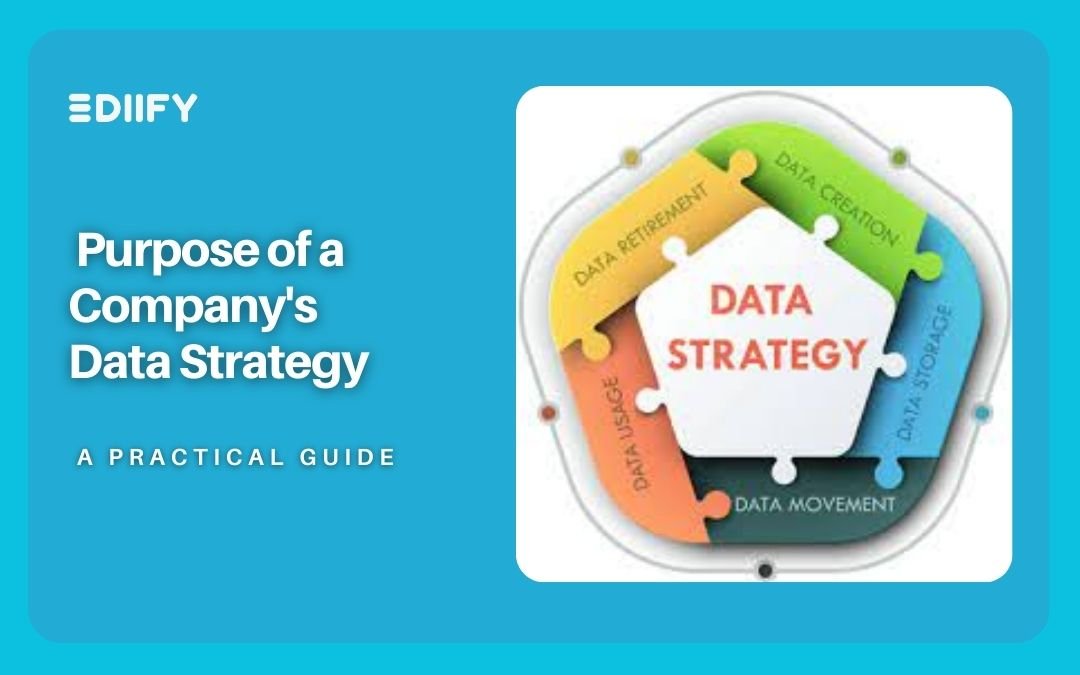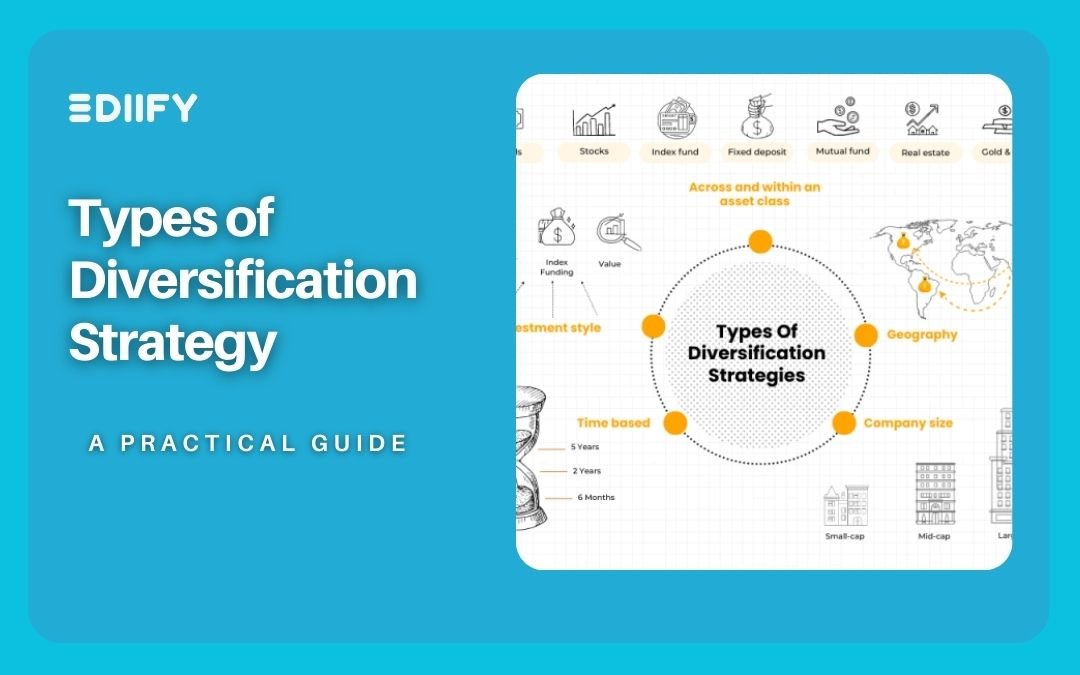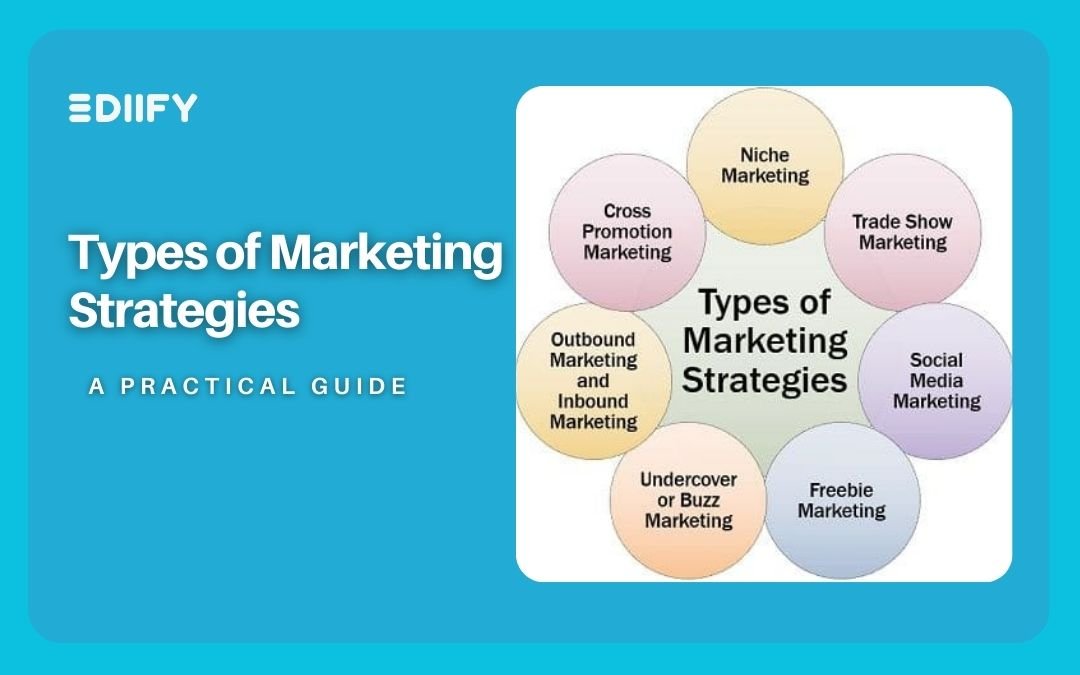
Purpose of a Company’s Data Strategy: A Comprehensive Overview
Jan 23, 2024 | EDIIFY Blogs
Introduction:
In today’s digital era, data has evolved into a prized asset, prompting companies to acknowledge the necessity of a well-defined data strategy. A company’s data strategy functions as a compass, guiding it through the expansive landscape of information and analytics. This blog seeks to unveil what is the purpose of a company’s data strategy, shedding light on how it transcends mere data collection and storage to become a strategic enabler for informed decision-making and sustainable growth.
The Purpose of a Company’s Data Strategy:

1. Informed Decision-Making:
A primary objective of a company’s data strategy is to facilitate informed decision-making. By harnessing the power of data, organizations can derive actionable insights that assist leaders in making well-informed, evidence-based decisions. Whether analyzing market trends, understanding customer preferences, or optimizing operational efficiencies, a robust data strategy ensures that decisions are grounded in data-driven intelligence.
2. Operational Efficiency and Optimization:
Companies generate and accumulate vast amounts of operational data daily. A well-defined data strategy enables organizations to leverage this data for optimizing internal processes and enhancing operational efficiency. From streamlining supply chain management to optimizing resource allocation, data-driven insights empower businesses to reduce inefficiencies and enhance overall operational performance.
3. Customer Understanding and Personalization:
In today’s competitive landscape, understanding customer behaviour is pivotal. A data strategy assists companies in analyzing customer data to gain insights into preferences, purchasing patterns, and overall satisfaction. Armed with this knowledge, businesses can tailor their products, services, and marketing efforts, leading to enhanced customer experiences and increased loyalty.

4. Risk Management and Compliance:
Data strategy plays a crucial role in risk management and ensuring regulatory compliance. By establishing protocols for data security, privacy, and compliance with industry regulations, companies safeguard themselves against potential risks and legal challenges. A robust data strategy includes measures to protect sensitive information and uphold data governance standards.
5. Innovation and Adaptability:
Embracing a data-driven culture fosters innovation within a company. A data strategy encourages experimentation and the exploration of new ideas based on data insights. It enables organizations to adapt to changing market dynamics, technological advancements, and evolving customer expectations, ensuring long-term sustainability and relevance in a dynamic business landscape.

Conclusion:
In the dynamic landscape of business, a company’s data strategy serves a multifaceted purpose that extends far beyond mere data management. It emerges as a strategic asset that empowers organizations to make informed decisions, enhance operational efficiency, understand and personalize customer interactions, manage risks, and foster a culture of innovation.
As companies navigate the complexities of the digital age, the significance of a well-crafted data strategy becomes increasingly evident. It not only ensures the effective use of data but also positions the company to thrive in an era where data-driven insights are integral to success. In conclusion, the purpose of a company’s data strategy lies in unlocking the full potential of data as a strategic resource, thereby driving sustainable growth and competitiveness.
Discover the levels of Strategy
https://ediify.com/project/levels-of-strategy-unlock-your-potential/











